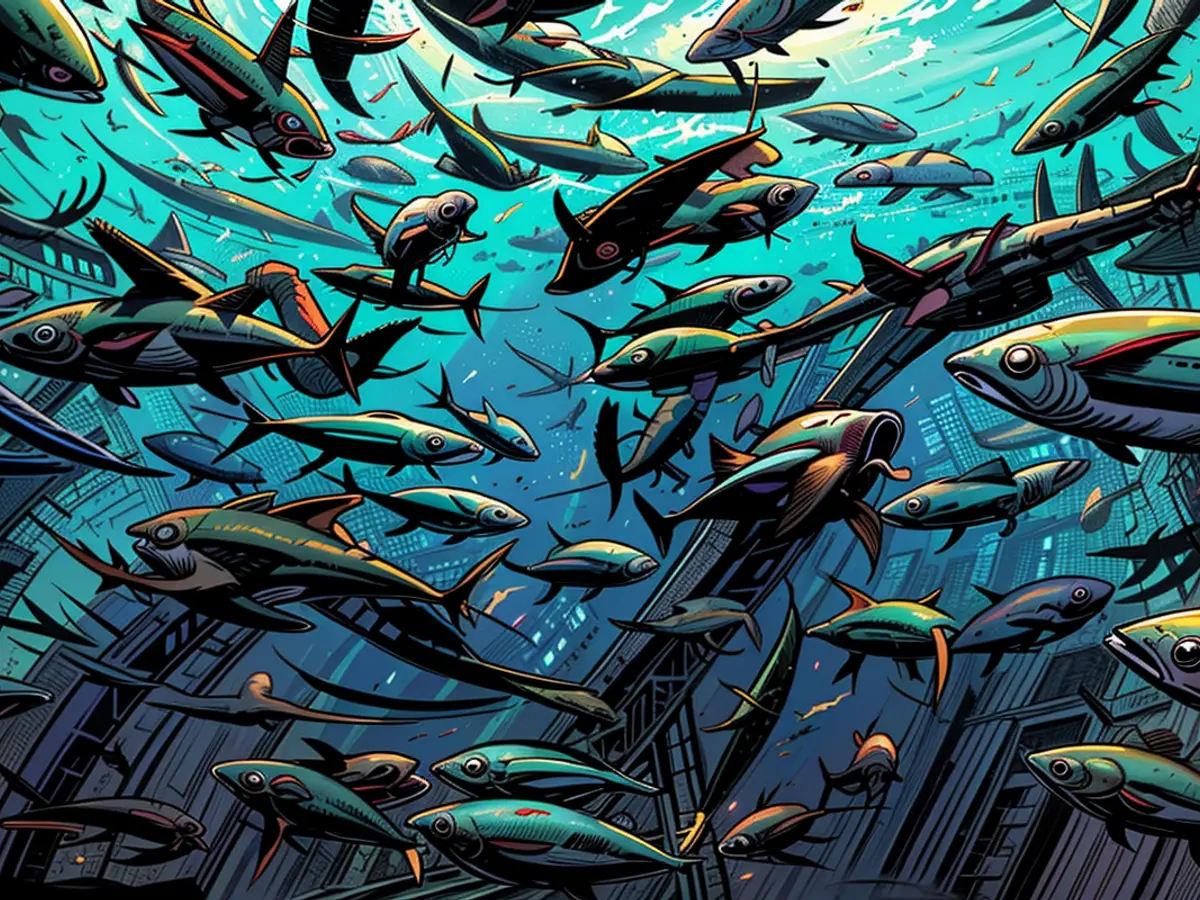- Exploring the Size Spectrum: ZDF Documentary Unveils the Tuna's Journey from Large to Minuscule
In your local supermarkets, you'll find it in cans, frequently featured in raw form in sushi bars: tuna. The global love for this fish has led to its dwindling population due to overfishing. The program "Terra X: Tuna - The Persecuted Hunter", airing this Sunday (7:30 PM) on Channel 2, dives into how this hunted hunter can be preserved.
The giant bluefin tuna, also known as the red tuna, is the most expensive and sought-after tuna species, as per marine biologist and "Terra X" moderator Uli Kunz in the documentary. "Few fish are as well-researched and yet continue to puzzled scientists today," he shares.
Fitted with tracking devices, Kunz joins professional fishermen in the Mediterranean Sea to gain insights into the tuna's behavior and movements. "Every spring, tuna travel from the Atlantic into the Mediterranean to spawn," he elaborates. They cover nearly 10,000 kilometers a year, returning to the Atlantic in the fall. "The Strait of Gibraltar is the perfect spot to witness their arrival."
The rising popularity of sushi and ocean pollution are discussed in the documentary, which also delves into tuna's past. It's believed that even our ancient ancestors, the Neanderthals, consumed tuna. The advent of the canned food industry and the subsequent rise of sushi are regarded as pivotal moments. Typically, canned tuna contains related species, not the expensive bluefin tuna, which can fetch fishermen around 2,000 euros. "The rarer the bluefin tuna becomes, the higher its price soars."
To safeguard tuna in the Mediterranean, stringent catch quotas have been implemented. Deep-sea fishing, such as that practiced in Papua New Guinea, is suggested as a more humane method. However, the use of plastic lines can also pose a threat to marine life. The 45-minute film by Claudia Ruby also investigates marine pollution and highlights "plastic hotspots" in the oceans.
The documentary provides an exclusive glimpse into a massive fishing vessel trapping an entire school of fish - a sight seldom witnessed by consumers. "This is the unseen side of the fishing industry in our homes. We see the small cans, but this is where they originate," Kunz implies.
The fundamental question is: Can the tuna fishing industry meet its demand? The documentary offers a definitive answer, travelling to one of the primary importing nations, Japan, to showcase a tuna breeding program. Despite being considered "non-breedable", tuna have been successfully bred in captivity, taking nine years to reproduce. So, is aquaculture the solution? Spoiler alert: Not entirely.
This Sunday's documentary, "Terra X: Tuna - The Persecuted Hunter," explores ways to preserve the bluefin tuna, which is frequently consumed in sushi bars and can fetch fishermen high prices due to its dwindling population. Viewers can tune in at 7:30 PM on Channel 2 to learn more about the tuna's behavior and migrations in the Mediterranean Sea.
In the documentary, marine biologist Uli Kunz joins professional fishermen in the Mediterranean Sea to study the bluefin tuna's movements and spawning patterns, shedding light on its annual journey spanning nearly 10,000 kilometers.








